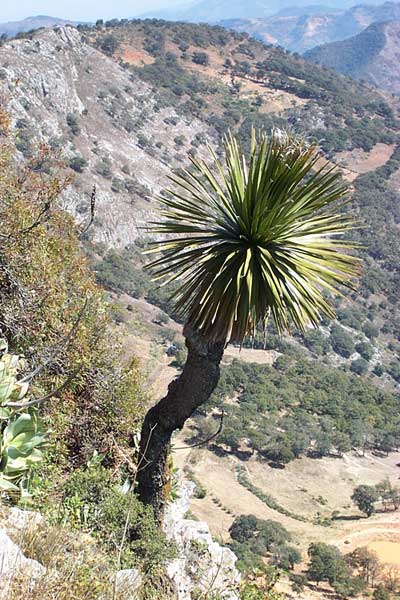Excerpts from Jim Conrad's
Naturalist Newsletter
from the January 19, 2007 Newsletter issued from Sierra Gorda Biosphere Reserve, QUERÉTARO, MÉXICO
NOLINA
At the cliff's edge the most eye-catching plant looked like a very bushy-topped palm, or maybe a yucca. However, it was one of the
"bear grasses," NOLINA PARVIFLORA, and you can see it below:

Apparently this species grows much larger than our rock- ledge ones, and their trunks can branch. You can see a spectacular, branched-trunk one and read more about it at http://www.rarepalmseeds.com/pix/NolPar.shtml.
These trunked nolinas look so much like tree-yuccas, such as the Joshua Tree, that you wonder what's the difference. When they're flowering, the differences are great. Yuccas produce fairly large, white flowers while nolina blossoms are much smaller. Also, unlike most agaves and yuccas, nolinas are dioecious -- producing male flowers on one plant and female flowers on another. You can get a good introduction, with pictures, to the world of nolinas and their close relatives at http://www.succulent-plant.com/nolina.html.
That page's taxonomy is a little out of date. Genetic sequencing now places nolinas into a newly constituted family, the Ruscaceae, or Lily-of-the-valley Family. In fact, once you think about it, individual nolina flowers do look a lot like Lily-of-the-valley flowers, though the plant bodies, at least at first glance, are completely dissimilar. This is another example of flowers reflecting much better than plant bodies a plant's genetic relationships.